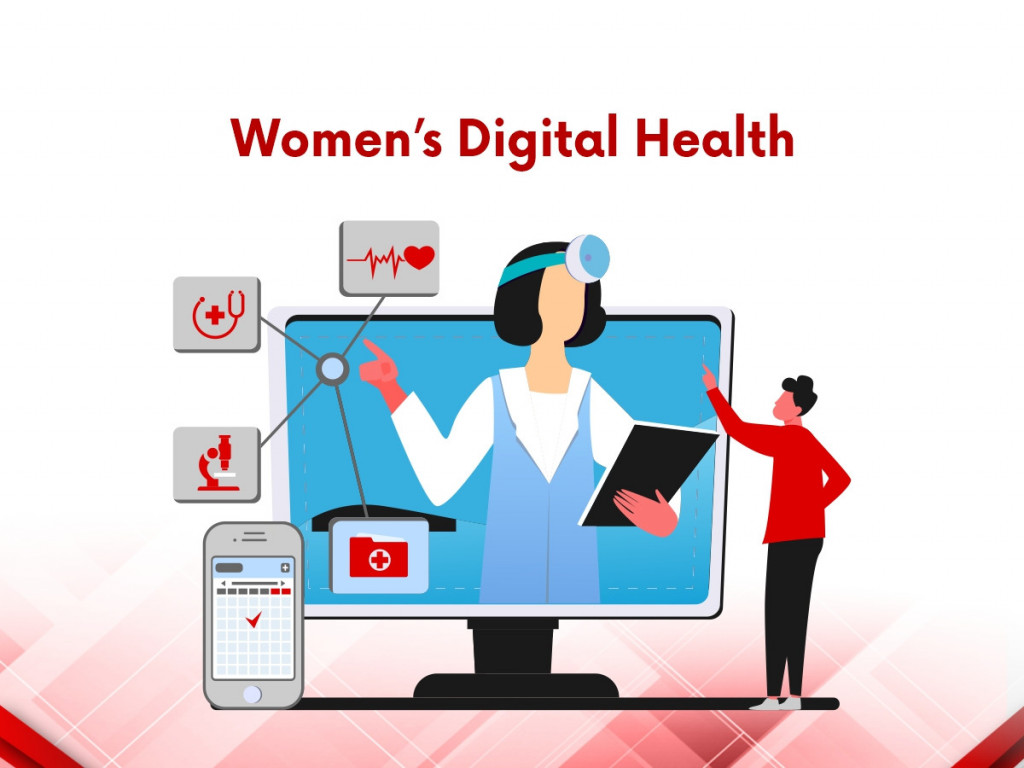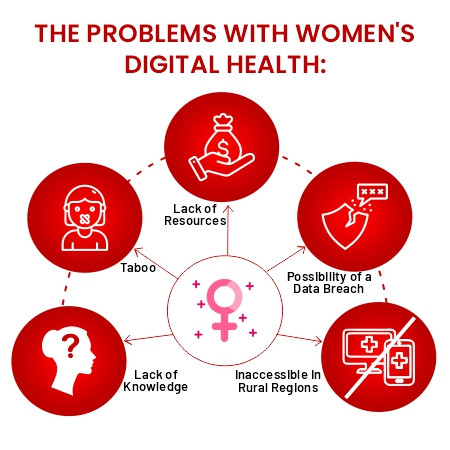
Close


Women make up half of the world’s population. Yet, research and development funding for women’s healthcare products and services has been characterised as being inadequate and underfunded.
Women’s health has long been neglected, and many issues concerning women’s health remain taboo. This is primarily caused by a lack of data about women, which can have tragic consequences that can prove fatal. Nevertheless, there is an increasing realization of the same and the need for more adaptable information and care. Hence, digital health has a crucial role to play in this.
Women’s digital health refers to the initiatives made by industry participants and researchers that include technical solutions, such as mobile apps, software, wearables, and diagnostic tools, that are specifically designed to help improve the health and wellness of females.
Since it focuses exclusively on women’s healthcare, it is termed “FemTech,” or female technology. The term “FemTech” was first used in 2016 by entrepreneur Ida Tin, the co-founder and CEO of Clue, a mobile application for menstrual health.
The global FemTech sector is anticipated to reach a market value of over 97 billion dollars by 2030, growing at a CAGR of over 16%.
Fertility, pregnancy management, and contraception are the major areas of digital women’s health that have received the most attention so far. Some FemTech companies also concentrate on diagnosing anxiety and depression, cervical examination and screening, and contraception.
Moreover, the women’s digital health sector is incorporating artificial intelligence with the goal of achieving life-changing results in oncology by early monitoring and diagnosis of a range of diseases, including polycystic ovarian, endometriosis, assistive reproduction syndrome, and cervical, ovarian, and breast cancers.
Examples of best period tracking apps: Clue, Flo, Cycles, Glow, Eve.
Examples of wearables designed for women: Ava, Livia
Examples telemedicine apps: Doctor 24×7, Teladoc
Although recent initiatives by numerous companies have showed significant advancements in women’s digital health, there are still a number of difficulties impacting FemTech organizations and industries.

Forecasts suggest that there is a lot of scope in the technological advancement sector for women. In 2027, the global market for women’s health will reach $60 billion, up from its 2019 statistic of $18.75 billion.
It is observed that there are five major areas of opportunity for women in digital health innovation, which are recognised with continuing expansion and attention in the market.
A developing area of digital therapeutics (DTx) is women’s health, which offers evidence-based software applications to prevent, manage, and treat medical issues. Software-based contraceptive tool Natural Cycles (FDA authorised in 2018) and digital pelvic floor health exercise tool Renovia (FDA approved in 2019, with $17M raised in April 2021) were two early examples of digital therapeutics in women’s health.
Medication adherence, virtual coaching, biophysical stimulation, and side effect monitoring in relation to fertility treatments, pregnancy, PCOS, hormone health, menopause, mental health, and gynaecological cancers are growth areas for women+ digital therapeutics.
Menopause, sexually transmitted diseases, and pelvic floor issues are among the once-stigmatized conditions that are now being addressed in the digital health sector. There are still significant gaps surrounding medical requirements for miscarriage, abortion, and women’s procedures including hysterectomies and mastectomies.
There is still ample opportunity for primary and chronic care digital companies to curate solutions for women. For instance, menstruation can have a variety of effects on a person’s mental health, level of energy, and nutrient intake. By incorporating this knowledge, primary health tools can be improved. Women also respond differently to critical disorders like diabetes and stroke, and gender-based protocols could help tailor the responses of digital care systems. Companies will need to closely monitor how issues affecting women’s health affect total health demands and incorporate these insights into digital interventions, particularly in the fields of digital therapies and remote patient monitoring.
Healthcare disparities are amplified for women who are Black, Latinx, or Indigenous, identify as a sexual minority, have a disability, or are low-income. Gender is increasingly recognised as a social predictor of health. Digital health enterprises should approach women’s health with an intersectional perspective, concentrating on how many identities and experiences affect healthcare attitudes and demands.
Women must be well represented in health research for there to be innovation in women’s care. Unfortunately, there are still representational gaps. For instance, only 39% of participants in cardiovascular clinical trials are women, despite the fact that women account for 51% of all cardiovascular patients. The same is true for HIV research, as women make up only 39% of clinical trial participants despite making up 44% of all HIV patients.
Despite various developments in digital health solutions, women’s digital health is still in its development given the stigma surrounding women and their health. Despite the fact that women are 75% more likely than men to utilise digital tools to track their health, it continues to be underfunded and has significant unmet requirements throughout the entire segment. Customized and targeted solutions must be created in order to discover the gaps and unaddressed needs. Women’s health policies must be designed in order to raise awareness and give them priority.
Nevertheless, FemTech solutions are being made possible through healthcare R&D, and as a result, the FemTech industry is anticipated to experience enormous growth over the coming years.
Authored by – Guniyal Bagga
Please Subscribe our news letter and get update.
© Copyright 2023 – Wissen Research All Rights Reserved.
Powered by VintageCoders